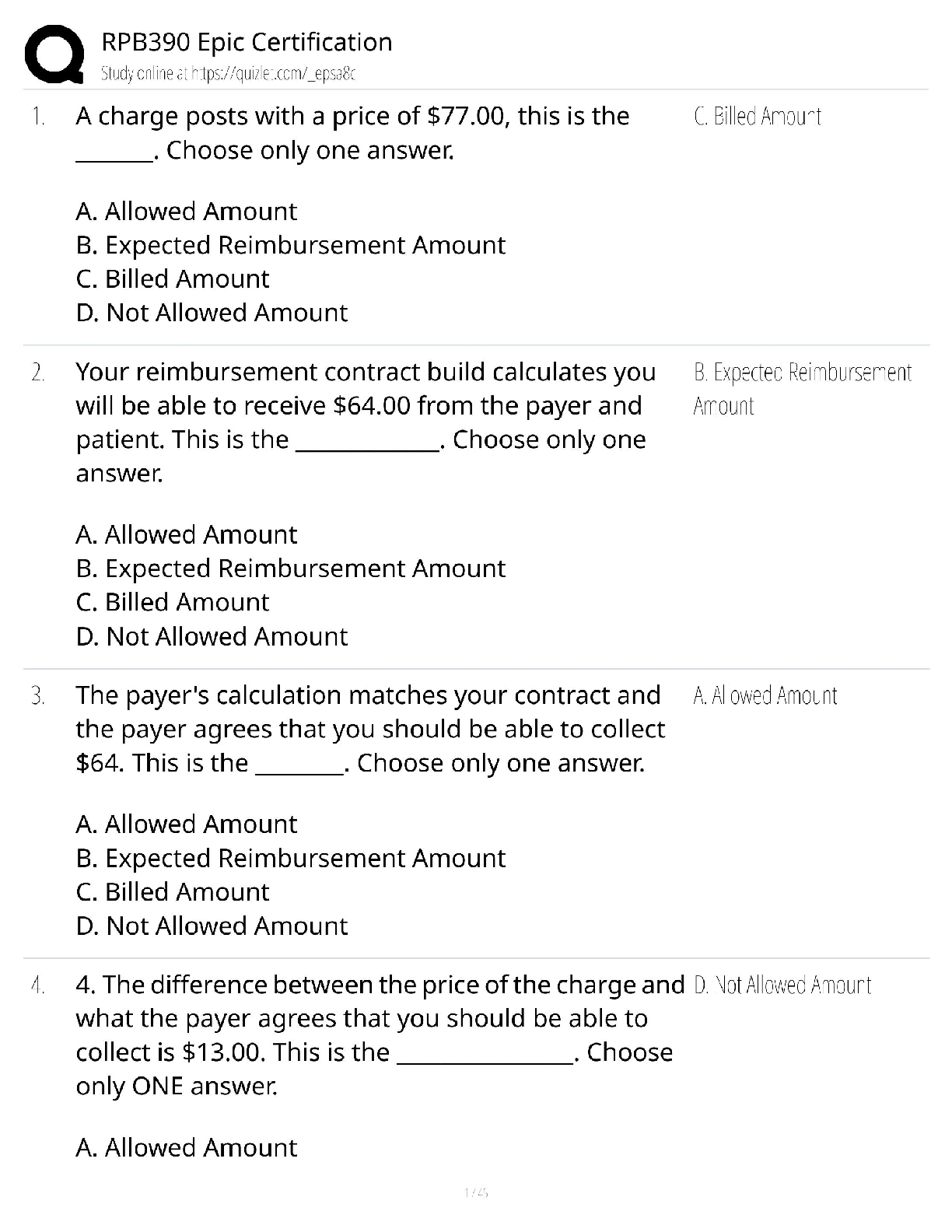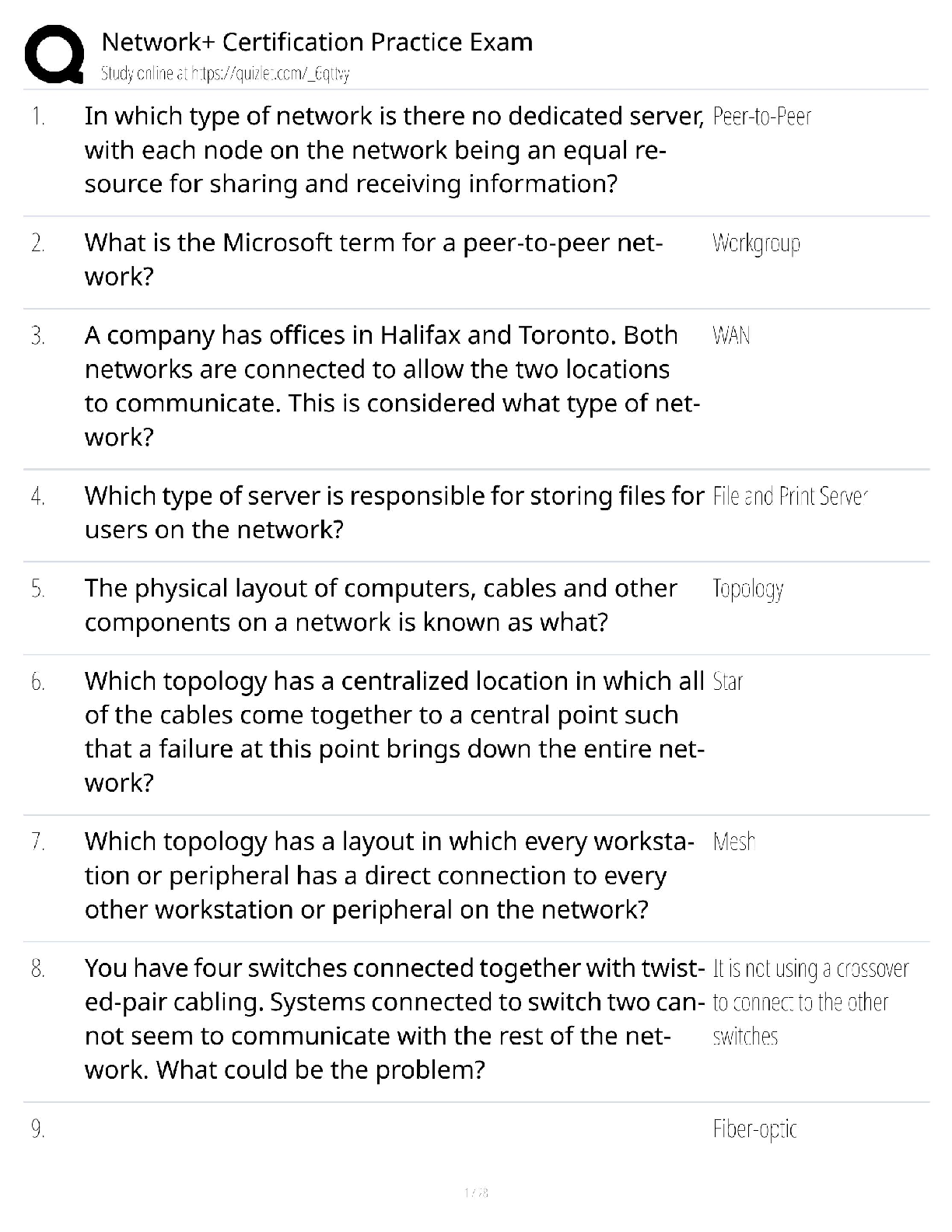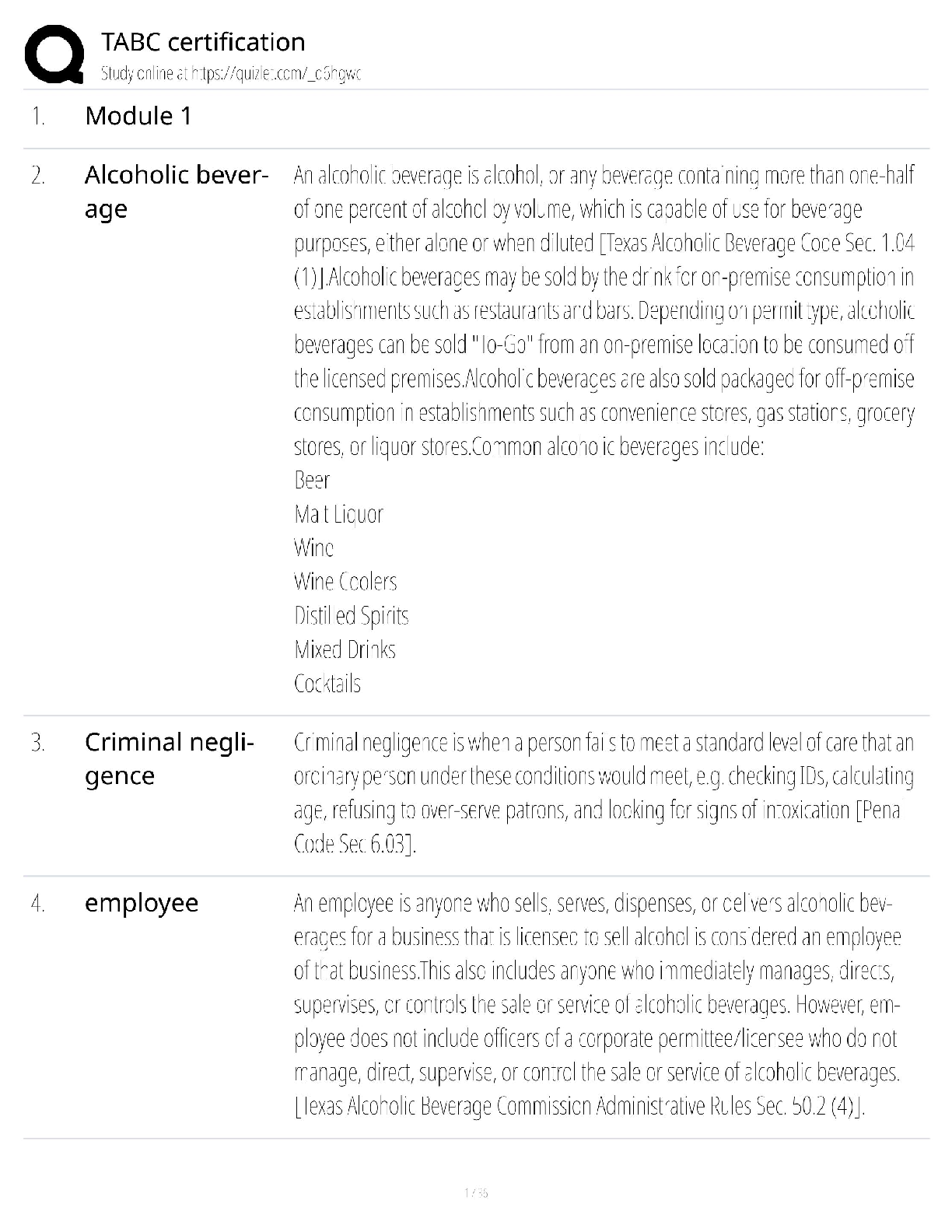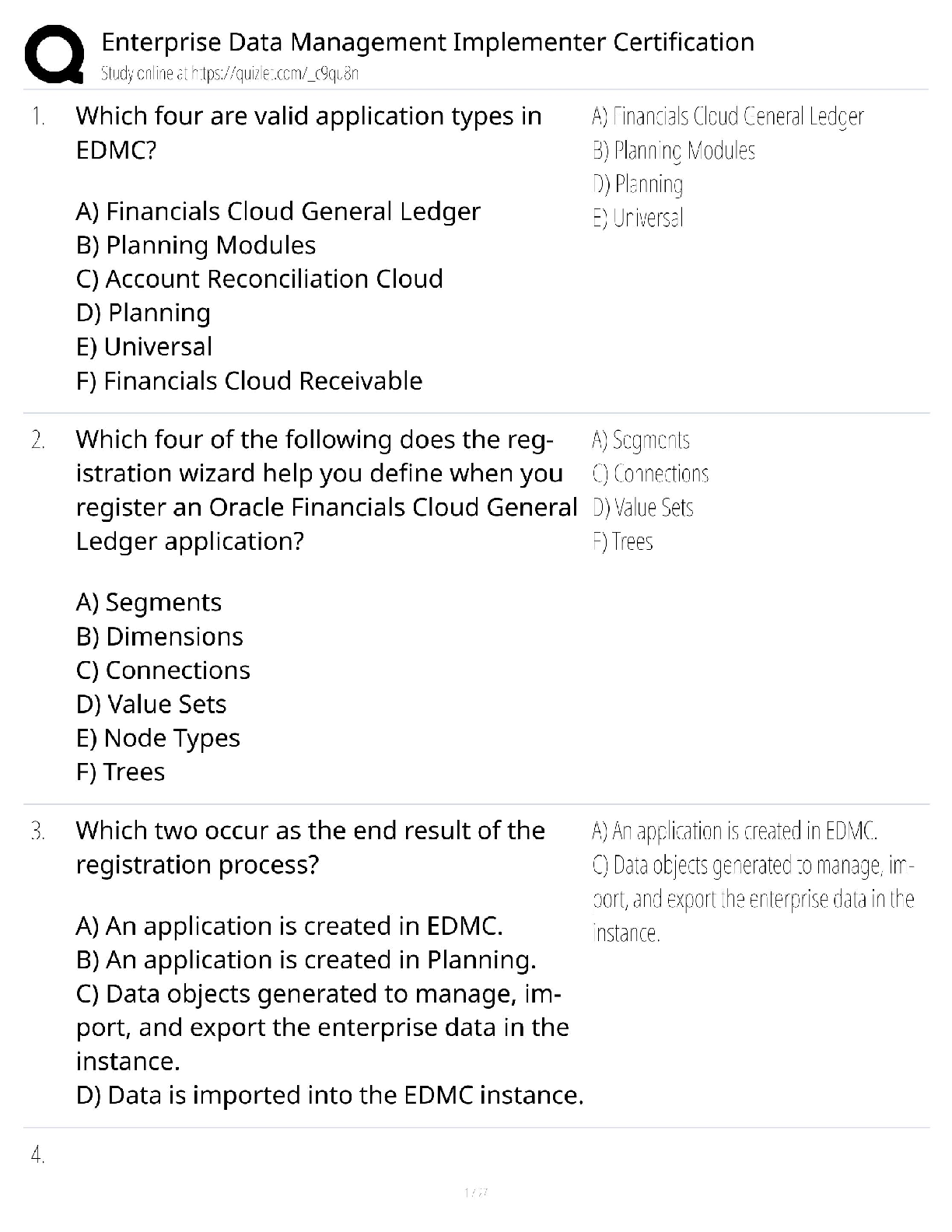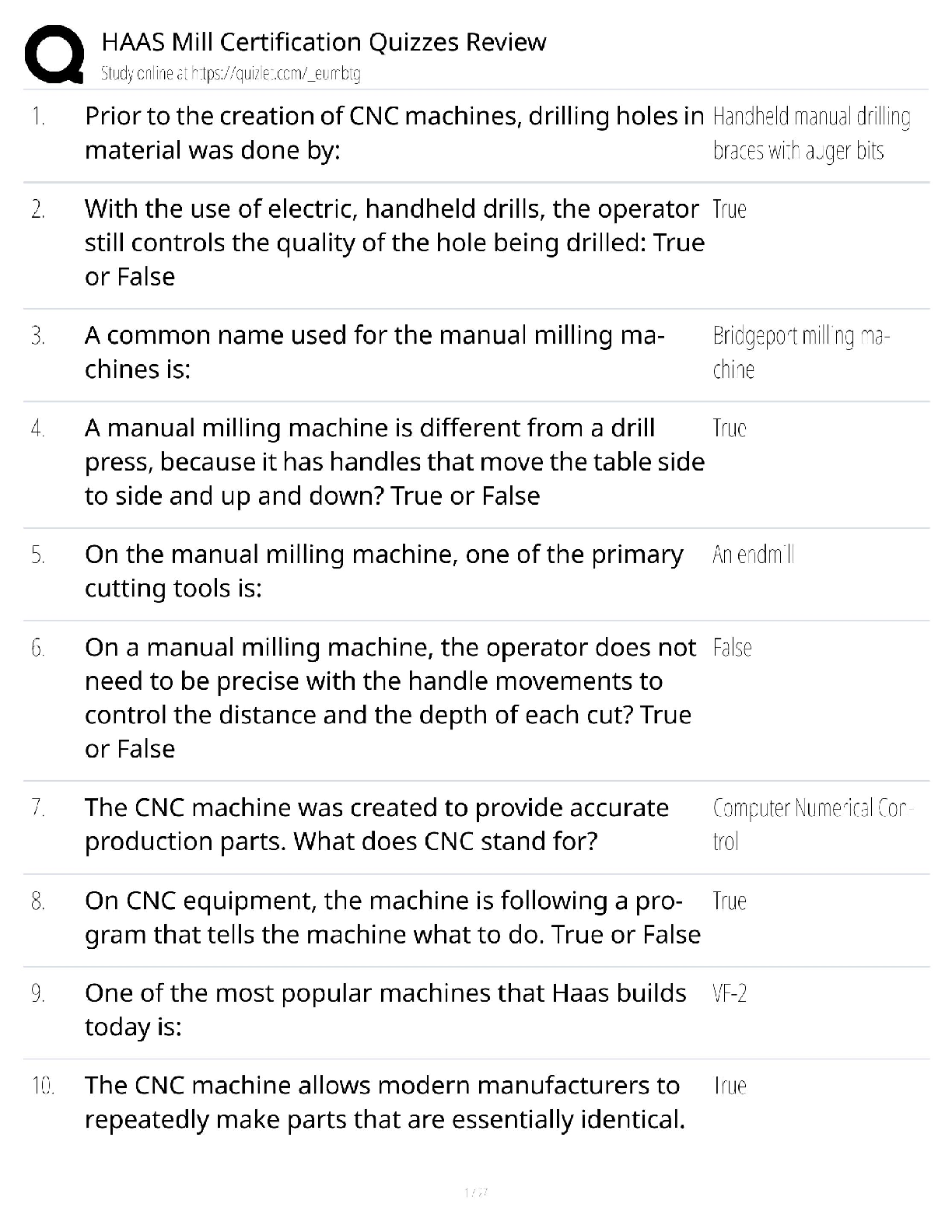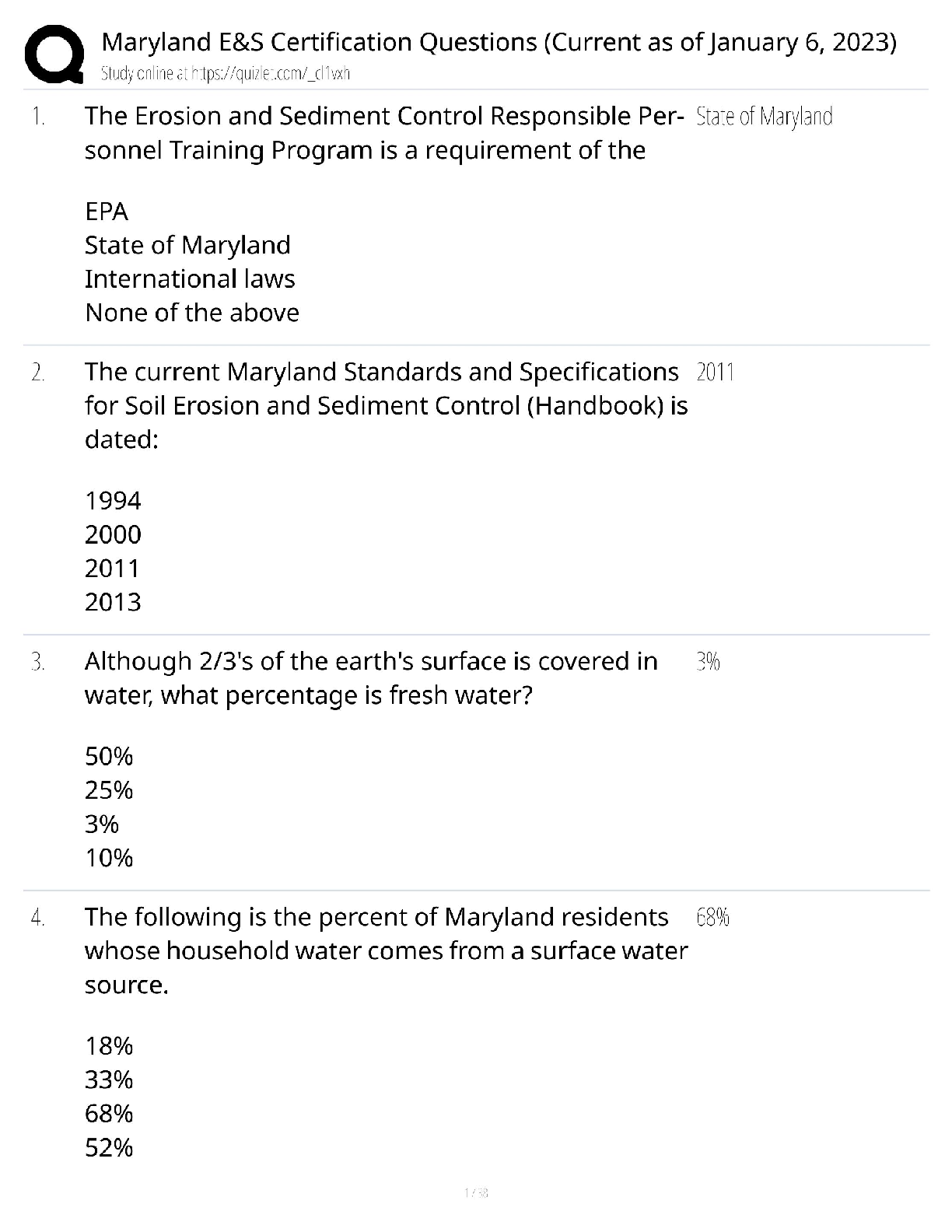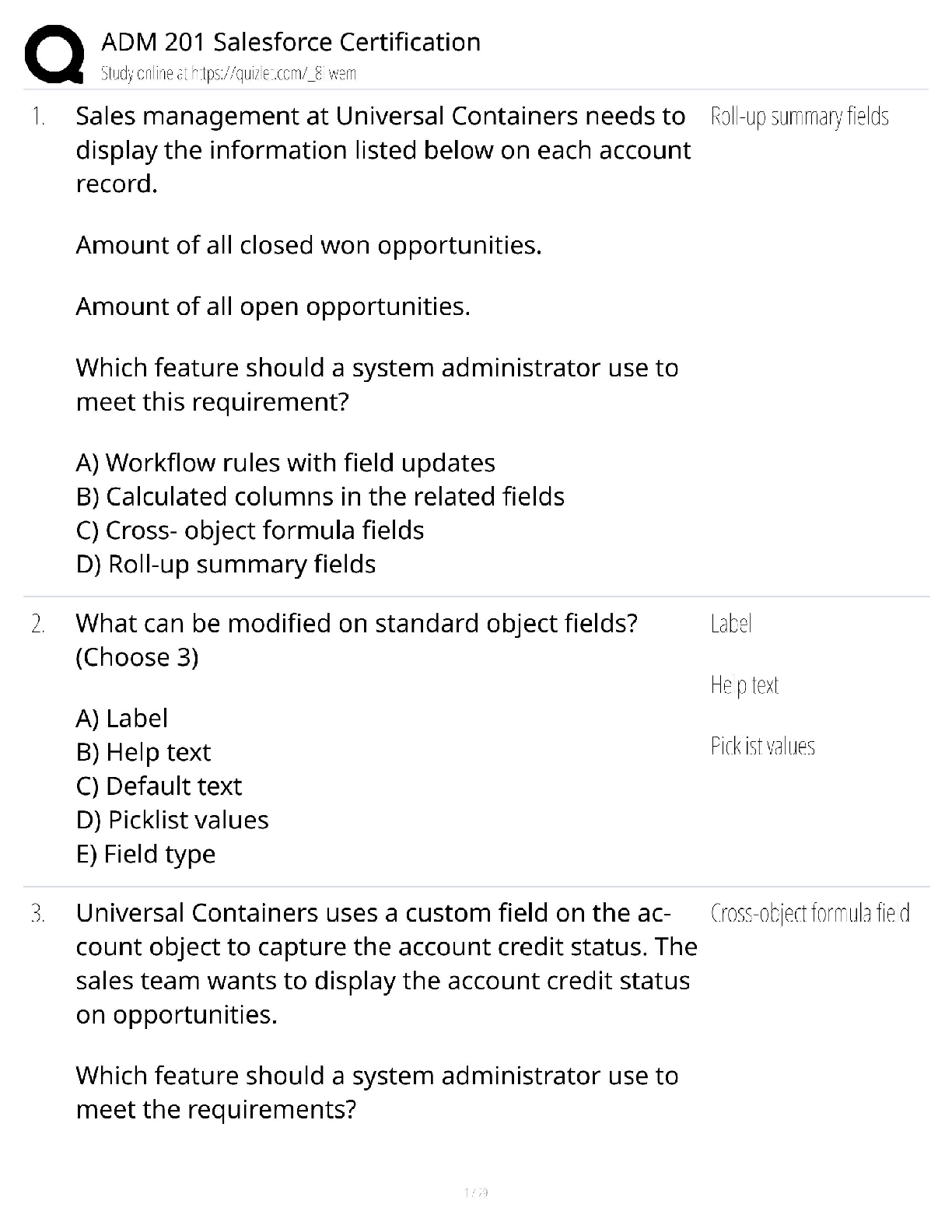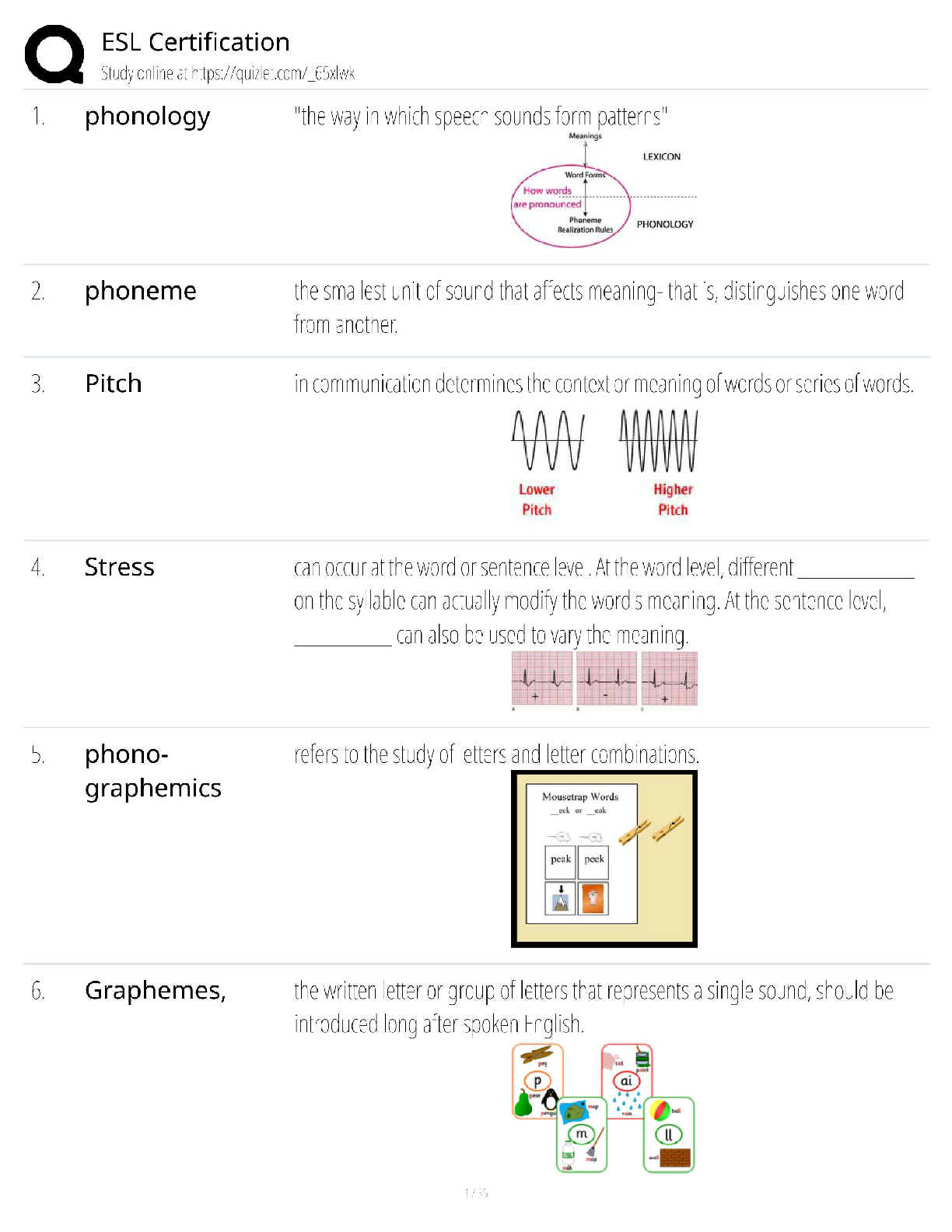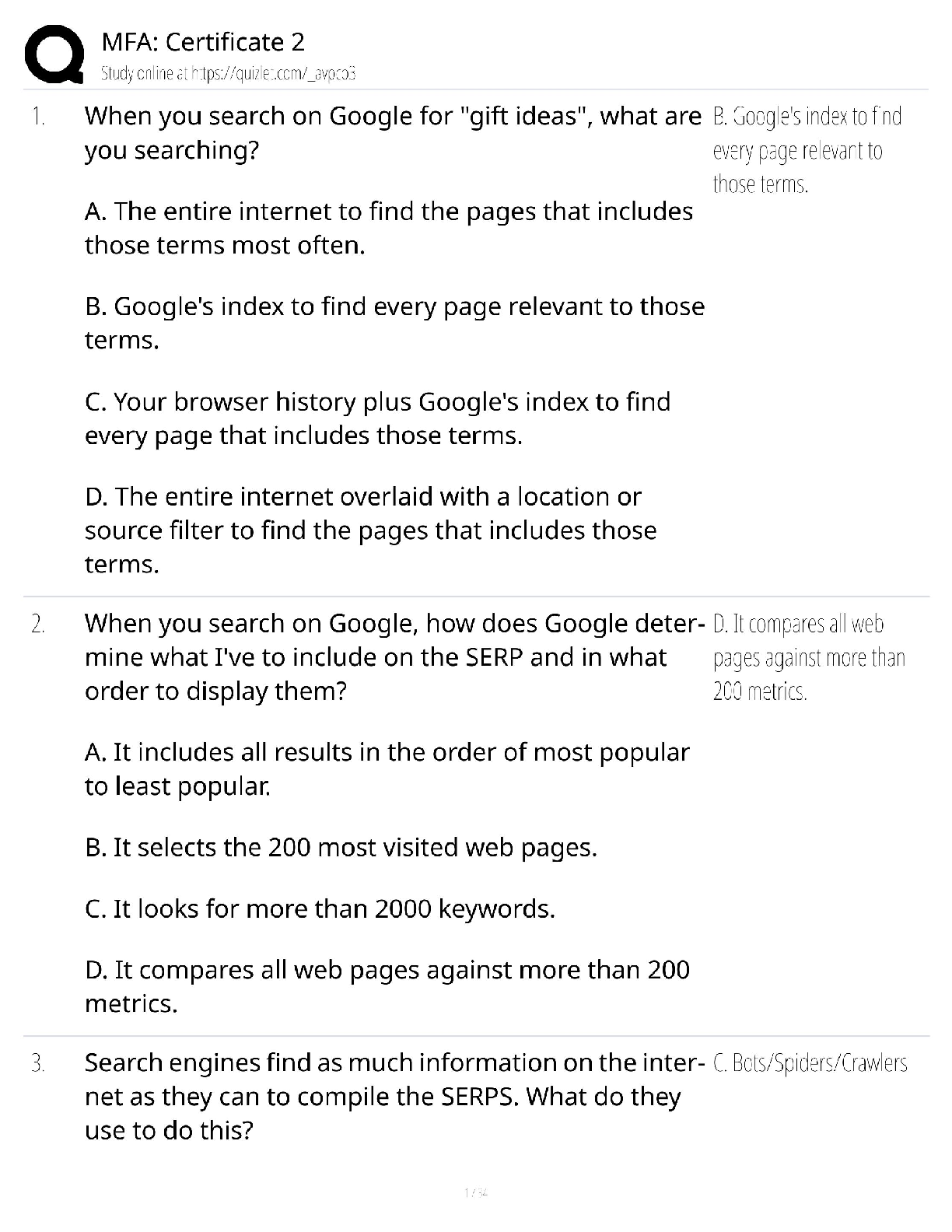*NURSING > QUESTIONS & ANSWERS > NRP 7th edition part 1. 55 questions with accurate answers. Graded A+ (All)
NRP 7th edition part 1. 55 questions with accurate answers. Graded A+
Document Content and Description Below
1. A baby is born at term with a bilateral cleft lip and palate and a very small mandible. She requires positive-pressure ventilation because she is not breathing. You are unable to achieve a seal w ... ith bag and mask. Which intervention is indicated? - Ans-Insert a laryngeal mask 2. You are at the resuscitation of a newborn who is gasping and has a heart rate of 60 beats per minute. What is the most important action you can take? - Ans-Provide positive-pressure ventilation 3. What size (internal diameter) endotracheal tube should be used to intubate a newborn with an estimated gestational age of 26 weeks (estimated birth weight of 800 g)? - Ans-2.5 mm 4. Your team attends an emergency cesarean delivery of a term baby because of chorioamnionitis, meconium-stained amniotic fluid, and fetal heart rate decelerations. At delivery, the newborn is term as expected, with very poor tone and he is not breathing (apneic). You quickly perform initial steps, but the newborn is still not breathing. What is the most appropriate next step of resuscitation? - Ans-Start positive-pressure ventilation and check heart rate response after 15 seconds 5. During the resuscitation of a newborn, you auscultate the apical pulse and count 10 beats over a 6 second period. What heart rate do you report to your team? - Ans-100 beats per minute 6. You are part of a team preparing for the birth of a baby who has meconium-stained fluid and a category III fetal heart rate tracing. A person skilled in endotracheal intubation should be - AnsPresent at the birth. 7. You are at a delivery of a baby born through meconium-stained amniotic fluid, and the baby is not vigorous. What steps should be taken immediately after birth? - Ans-The baby should be brought to the radiant warmer for initial steps of newborn care. 8. What is the most effective maneuver to establish spontaneous breathing in a baby that is apneic after initial steps? - Ans-Administration of positive-pressure ventilation that inflates the lungs9. A newborn of 34 weeks' gestation is not breathing (apneic) at birth, does not respond to initial steps and requires positive-pressure ventilation. What concentration of oxygen should be used as you begin positive-pressure ventilation? - Ans-21 - 30% oxygen 10. You have started positive-pressure ventilation for a newborn because her heart rate is low (bradycardia). What is the most important indicator of successful positive-pressure ventilation? - Ans-A rising heart rate 11. A baby requires positive-pressure ventilation because she is not breathing (apneic), but she soon establishes spontaneous respirations and a heart rate over 100 beats per minute. Her oxygen saturation is lower than the target level when in room air, so you provide free-flow oxygen. Which of the following devices cannot reliably deliver free-flow oxygen? - Ans-Mask of selfinflating bag 12. Which statement best describes normal transitional physiology at the time of birth? - Ans-Babies may take as long as 10 minutes after birth to increase their oxygen saturation to greater than 90%. [Show More]
Last updated: 3 years ago
Preview 1 out of 7 pages
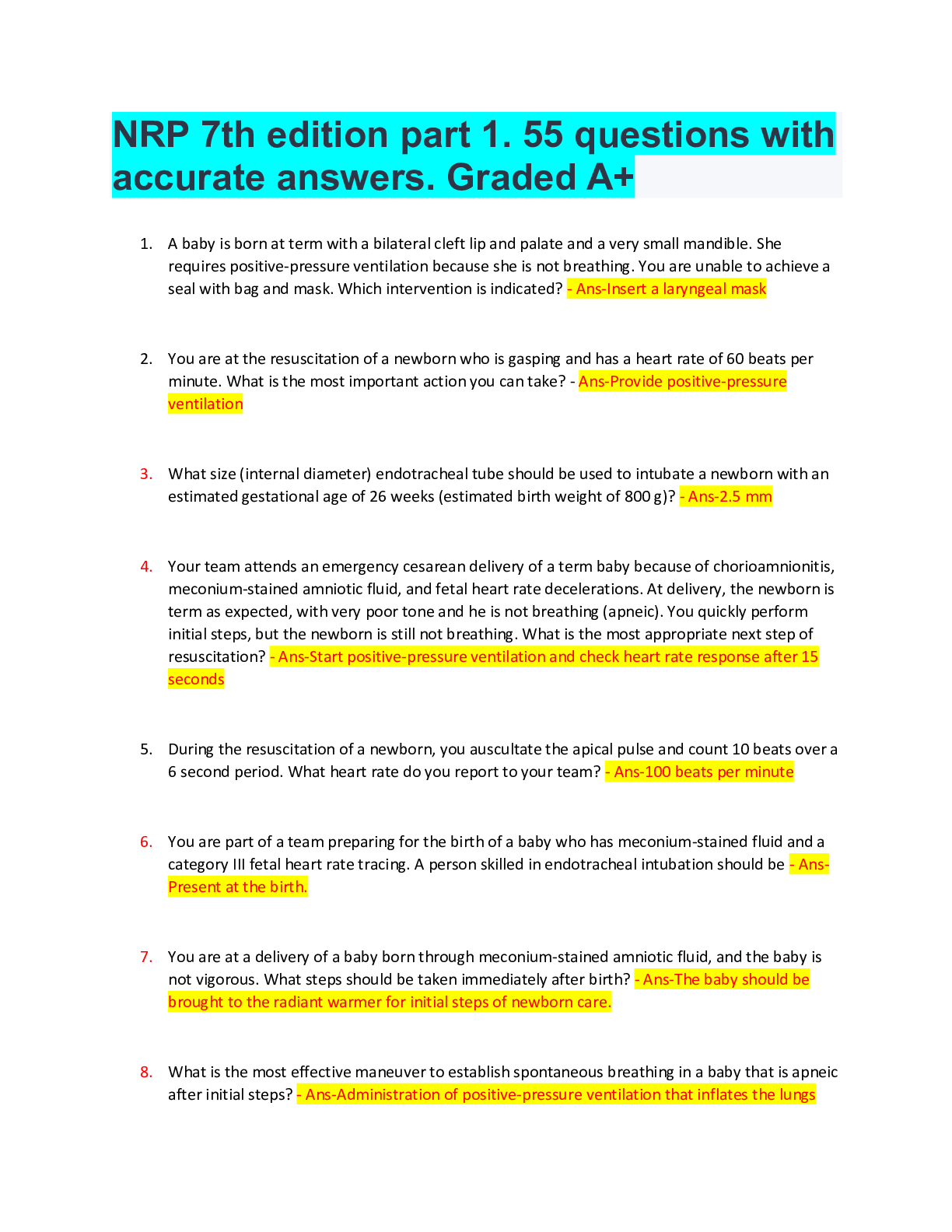
Buy this document to get the full access instantly
Instant Download Access after purchase
Buy NowInstant download
We Accept:

Reviews( 0 )
$7.00
Can't find what you want? Try our AI powered Search
Document information
Connected school, study & course
About the document
Uploaded On
May 25, 2022
Number of pages
7
Written in
All
Seller

Reviews Received
Additional information
This document has been written for:
Uploaded
May 25, 2022
Downloads
0
Views
157













